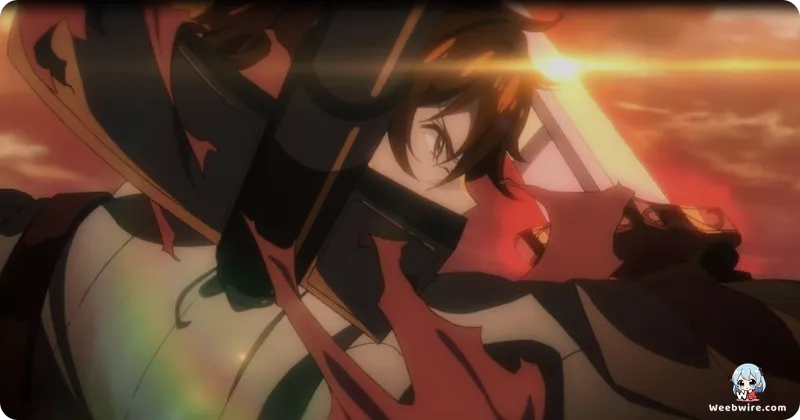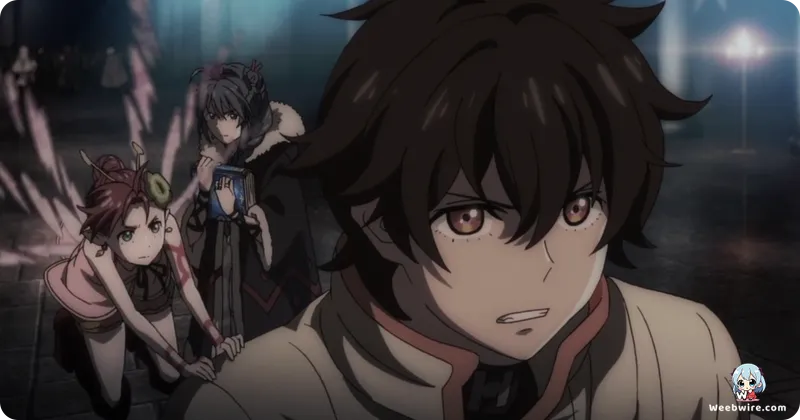The Light of Haecceitas: Unveiling Chain Chronicle Anime's Hidden Philosophical Core and Creative Brilliance

When Chain Chronicle - The Light of Haecceitas - debuted in January 2017, it promised to bring Sega's beloved mobile RPG to life as a captivating fantasy adventure. While its dynamic action sequences and expansive world-building immediately drew viewers in, a closer examination reveals a tapestry of unexpected insights, deliberate creative choices, and profound philosophical underpinnings that elevate the viewing experience far beyond a mere adaptation. Produced by Telecom Animation Film, this series proved to be more than a straightforward translation, introducing unique elements and exploring complex themes with remarkable depth and nuance.
One of the most significant and perhaps surprising revelations for long-time enthusiasts of the highly successful Chain Chronicle mobile game was the anime's choice of protagonist: Yuuri. The original RPG empowered players to embody a silent, customizable avatar, fostering an unparalleled sense of immersion and personal connection to the unfolding narrative. However, transforming such a player-driven, silent lead into a compelling anime narrative presents a considerable creative hurdle. The production team ingeniously navigated this challenge by crafting Yuuri as an entirely original character, conceived specifically for the animated series. With his distinctive character design, earnest demeanor, and unwavering resolve, Yuuri provided a tangible and deeply relatable anchor for viewers. This bold decision not only gave the narrative a clear focal point but also facilitated a more traditional character arc, imbuing the story with emotional resonance and personal stakes that would have been difficult to achieve with a silent, player-controlled protagonist. This particular creative choice sparked lively and passionate discourse among the game's dedicated fanbase, underscoring the delicate balance between faithfully adapting source material and fulfilling the unique narrative requirements of a new medium.
The anime also confronted the formidable task of condensing the Chain Chronicle game's colossal character roster. Renowned for its cast of over a thousand unique characters, each boasting intricate backstories and distinct abilities, the game thrives on this immense diversity. Adapting such an expansive universe into a concise, thirteen-episode series demanded incredibly strategic character selection. The production team meticulously chose key figures—such as the perpetually optimistic Pirika and the enigmatic Phoena—ensuring their prominence was crucial to the main plot and their appeal resonated strongly with the audience. This selective approach effectively highlighted the core narrative threads, focusing intently on the Volunteer Army's epic struggle against the ominous Black King, rather than attempting the near-impossible task of representing every single faction or character within the anime's inherently limited scope. This careful curation allowed the story to maintain its focus and emotional impact without becoming overwhelmed by its own vastness.

Beyond its skillful character adaptations, the series carries significant philosophical weight, subtly underscored by its intriguing subtitle: - The Light of Haecceitas -. 'Haecceitas,' a medieval Latin term, translates to 'thisness' or 'individuality' in scholastic philosophy. It denotes the unique, discrete qualities that make something distinct and irreplaceable. In the profound context of Chain Chronicle, this term is exceptionally insightful. The Black King, the formidable antagonist, relentlessly seeks to obliterate the world's history, cherished memories, and individual identities, aiming to transform everything into a uniform, desolate void. The Chain Chronicle itself, a physical embodiment of the world's collective history and power, stands as the ultimate bulwark against this existential annihilation. Thus, the anime's narrative evolves into a profound exploration of existential preservation—a valiant and desperate fight to safeguard the intrinsic value of each person, every treasured memory, and every unique facet of the world. Grasping this philosophical nuance elevates the series from a mere fantasy adventure to a deeper, more contemplative meditation on identity, memory, and the irreplaceable essence of individual existence.
The original Chain Chronicle mobile game, developed by Sega, achieved monumental success in the mobile RPG landscape, particularly within Japan. Its innovative blend of tower-defense and RPG gameplay, coupled with expansive lore and deeply character-driven stories, amassed a truly massive following. Consequently, the anime adaptation bore the considerable responsibility of meeting the high expectations of a pre-existing, devoted fanbase. A notable continuity feature that deeply resonated with these fans was the commitment to retaining many of the original voice actors for their anime roles. This thoughtful decision ensured a familiar auditory experience, maintaining a strong and comforting link between the two mediums—a detail profoundly appreciated by those who had invested countless hours with the game's beloved characters. The anime served as a crucial expansion of the franchise's reach, introducing the vibrant world of Yggdra to a broader global audience previously unfamiliar with the mobile game, while simultaneously offering a fresh and engaging perspective for long-time enthusiasts.
Finally, the titular artifact, the 'Chain Chronicle,' is far more than a simple magical macguffin; it is a brilliant and deeply symbolic narrative cornerstone. Within the lore, it is depicted as a collection of bound books embodying the world's complete history, where losing pages literally means the world's past is forgotten and erased. This concept powerfully mirrors the existential threat posed by the Black King. The battles waged by Yuuri and the Volunteer Army are not merely for survival; they are quite literally struggles to reclaim and preserve the very fabric of existence, memory, and identity itself. The visual representation of the Chain Chronicle, as its pages are lost and subsequently regained, serves as a potent metaphor for the fragility and paramount importance of historical knowledge and individual narratives. These layers of thematic depth, clever adaptations, and respectful nods to its gaming origins make Chain Chronicle - The Light of Haecceitas - a far more intricate and rewarding viewing experience than initially apparent, inviting audiences to uncover its subtle brilliance and hidden gems.
Credits
Chain Chronicle - The Light of Haecceitas -
Author
Sega (Original Game)
Cover Art
N/A
Studio
Telecom Animation Film
Publisher
Sega (Original Game Publisher)
Producers





